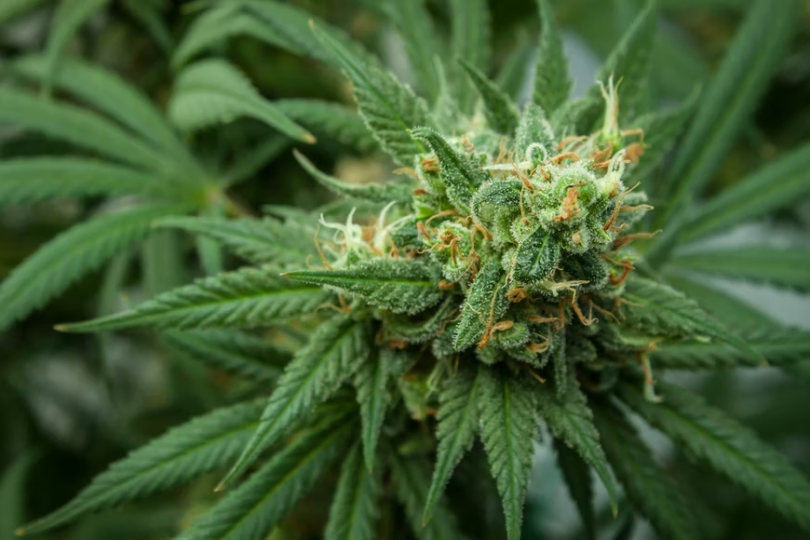Usually, when most people discuss the cannabis plant, they refer to the flowers (aka buds or inflorescences). Yet, there is far more to a cannabis plant than meets the eye. Almost every part of the plant can be used for something, from the seeds, roots, stalks, and flowers, to the fan leaves, roots, branches, trichomes, and sugar leaves.
It’s true that the flowers are generally considered to be the most desirable part of a cannabis plant because the flowers produce the trichomes that contain the much sought-after cannabinoids and terpenes.
In most instances, the flowers are harvested and used for various downstream products, but other parts of the plant can be used for multiple purposes. Have a look below to learn more regarding how different parts of the plant can be used to better the lives of humankind.
Flowers
Flowers only grow on female cannabis plants. To identify if a plant is male or female, people look for small teardrop structures consisting of pistils attached to bracts. Another way to determine if a plant is female is to look for flowers covered with thick and frosty-looking layers of trichomes. The thicker the coating of trichomes, the more desirable a cannabis plant is.
As you well know, cannabis flowers are used to make various infusions such as tinctures, vape cartridges, concentrates, edibles, topicals, hashish, rosin, or the flower may just be smoked or vaporized as is.
There have been an ever-increasing number of studies on the various medicinal attributes of cannabis flowers in recent years. It has been proven repeatedly that this plant is more than just a means to get high. For example, a 2022 study found that 91% of people who participated in a trial using cannabis flowers to treat fatigue reported symptom improvement. [1]
Seeds
For more than 3,000 years, cannabis seeds have been consumed in China because they are known as a superfood. [2] It’s believed that cannabis seeds are one of the most nutritionally complete foods because, on average, these seeds contain all the essential amino acids and 35% protein. Additionally, cannabis seeds also have various anti-inflammatory properties, and the hull of a cannabis seed is believed to possess anti-cancer properties. [3]
Fan Leaves
Arguably, another one of the most important parts of cannabis is its leaves. There are different leaf types, but the large protruding leaves that provide the trademark symbol of the plant are known as fan leaves. These leaves appear along the length of a cannabis plant and are essential to the plant’s photosynthetic process.
Interestingly, cannabis fan leaves can be used to make a soothing herbal tea. When the dried leaves are steeped in hot water, terpenes are extracted, making the tea refreshing to drink. Some people like to juice the fan leaves, although you will need a lot to make an appreciable volume of juice.
Stalks and Stems
Most cultivators and growers throw away the stalks and stems of a cannabis plant during flower harvesting and processing. Yet, the stalks and stems can provide almost limitless possibilities in the form of housing, clothing, paper, and plenty more.
In fact, it’s believed that cannabis stalks can be used as a substitute in certain instances for fiberglass, cement, and insulation. Additionally, some people use the stems to make teas or to extract cannabinoids even though there are very low concentrations of cannabinoids in stems.
Sugar Leaves
Unlike fan leaves, sugar leaves are found close to the buds of a cannabis plant which is why, when cut, it looks like these leaves are cupping the buds.
These leaves are called sugar leaves because there are usually high volumes of trichomes found on them, making them look like they have been covered in finely powdered sugar. Often sugar leaves are used to make edibles or cannabis concentrates.
References
[1] Li X, Diviant JP, Stith SS, et al. The effects of consuming cannabis flower for treatment of fatigue. Med Cannabis Cannabinoids. 2022;5:76–84. [journal impact factor = N/A; times cited = 0]
[2] de Padua LS, Prosea Foundation B, Bunyapraphatsara N, Lemmens RHMJ. Plant resources of south-east asia. No. 12(1/2): medicinal and poisonous plants. Food and Agricultural Organization of the United Nations. Leiden (Netherlands) Backhuys Pub.
[3] Russo EB, Marcu J. Cannabis pharmacology: the usual suspects and a few promising leads. Adv Pharmacol. 2017;80:67-134. [journal impact factor = 6.14; times cited = 164]
Image Credit: https://unsplash.com/photos/BmVUVmWNJc8








